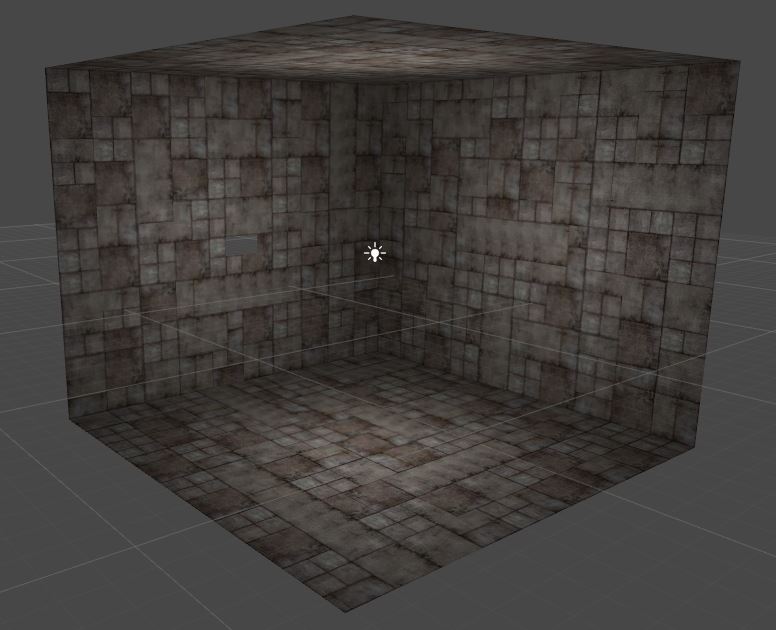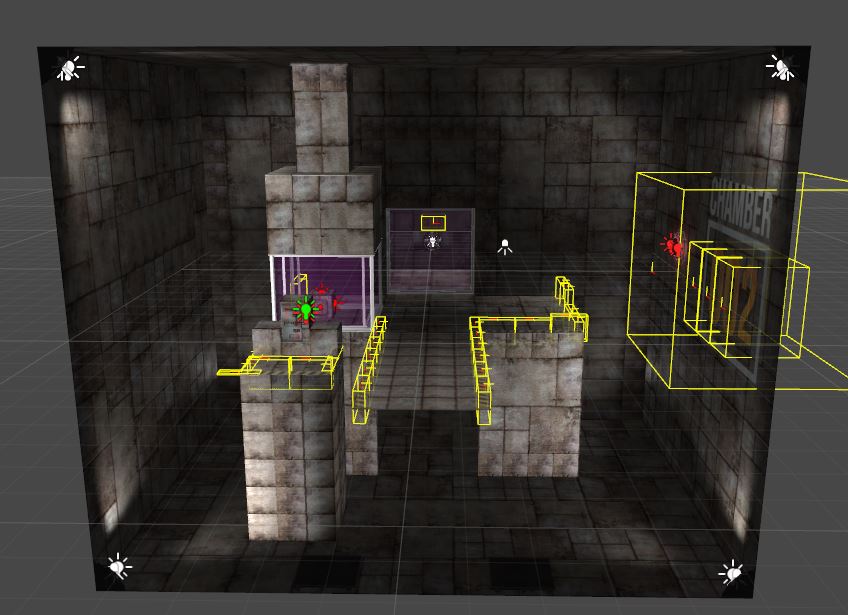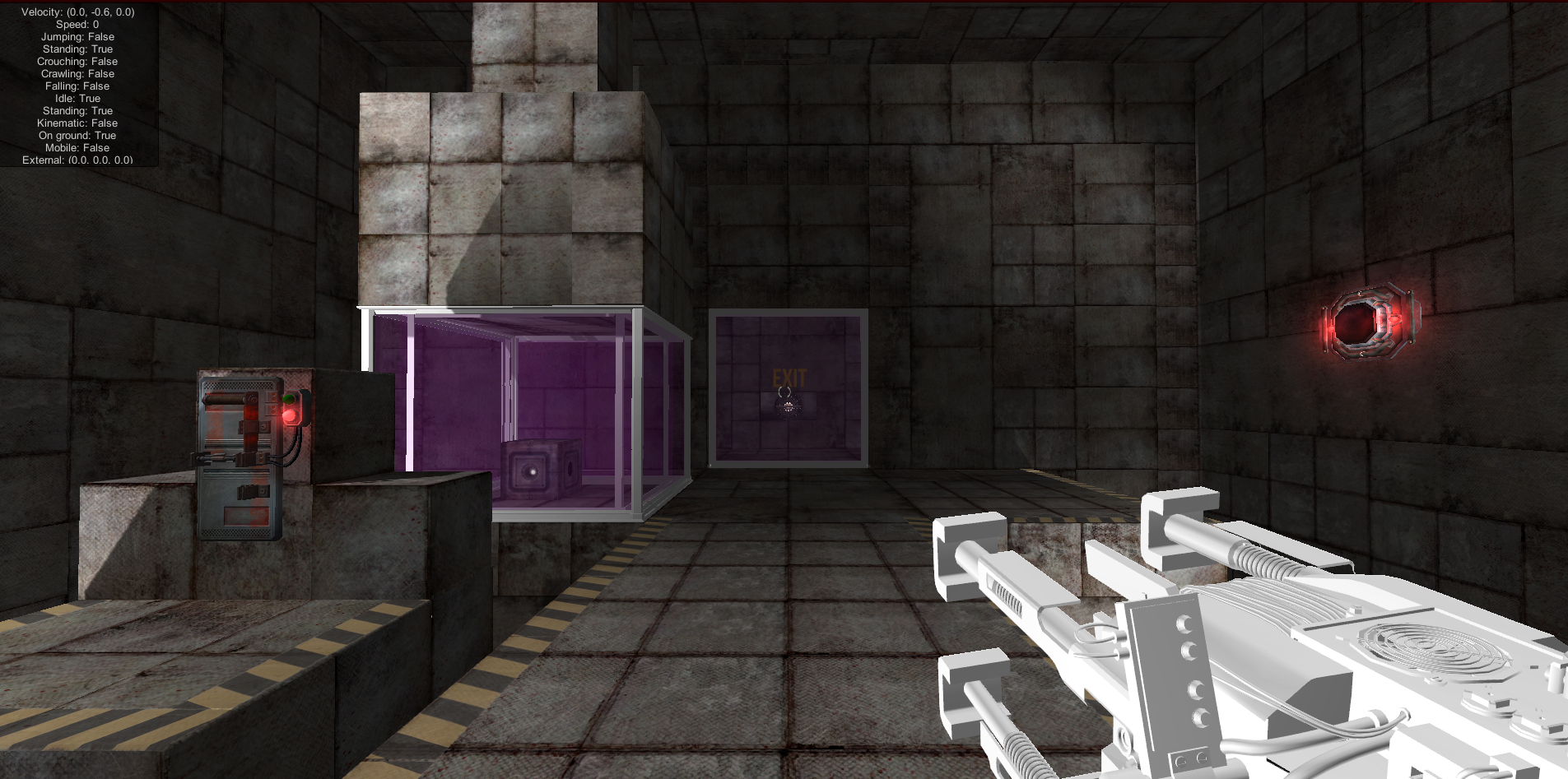Everything you read here can also be read at our website: Level Design and Building with a Modular System
Well then! It’s time for our third Development Blog and today we will discuss the subject of level design and how we at Guru Games work with modular graphical assets in order to build our levels in Magnetic. First, I’ll introdude myself. My name is Robin Holm and I’m the Lead Designer at Guru Games. For Magnetic and what I’m working with most of all is to build levels, both to make sure they are fun to play, but also so they’re pretty to look at. This means I am both a Level Designer and a Level Artist for the game.So, let’s get on with the level design discussion shall we? Building a level in Magnetic is quite unique due to how the basic layout of every Cube. A standard Cube, which is where a level is built, is always 20 meters in the X and Z axis (Length and Depth) and 16 meters in the Y axis (Height) Yeah, it’s not a perfect cube, but a 20 meter tall Cube felt like standing in a cathedral, so you know, game logic and all that. The important thing is that it feels like a cube, and these dimensions made that happen while making sure that we have enough space to do something interesting.

Screenshot showing how a Basic Cube in Magnetic looks like when we start building,
with a basic point light in the middle.
When we have this Cube inside Unity (the game engine we use for Magnetic) that’s all the player will see. Everything outside the Cube will never be visible (as long as you don’t animate objects to go through the outer walls of the cube). The Game is then built with dozens of these Cubes and when a player completes a level, he or she can leave the Cube through a corridor, which leads the player into the next challenge. When we have the basic cube it’s time for us Designers to go banonkers. Just build whatever you think is fun with simple blocks, try out what could be fun and what sort of interesting challenge you want the player to solve in this particular Cube. At this time, gameplay is king, no worries how the level will look or sound at this point.
When the level looks like on the picture above, the level is ready for testing in order to see if it’s fun and if anyone else besides yourself knows what’s going on. Yes, I made the glass purple because it was fabulous. Anyway, the important thing for us is to make sure that a level is interesting and “fun” to play before we start making it look good with graphical assets. When the level is deemed to be ok by the other designers, it’s time to make sure the level looks functional. The level in the picture above does not, so we make sure that things don’t float in the air or looks weird in any other way. It’s time to start working with the modular assets which I spoke about earlier.
The modular assets in Magnetic are mostly used to lighten the burden on our graphics team so that they don’t have to build every level in a 3D-application based on our blockouts. If you do things that way, (and we have tried) you can do a lot more custom design and unique shapes in your levels, but It’s quite a long process, it’s not always that much fun to do, but in the end it can result in pretty neat levels, and I’d recommend using it for small teams with tight deadlines because everyone can work continuously on production.If you go in with a modular approach instead you end up with all these modular pieces that you have to put together like a puzzle. First we look at how the foundation of the level is built, and then we rebuild it with the modular pieces, replacing the blockout as we move along. We make sure there are no razor sharp edges, with plane against plane, before we start decorating the level. We also build frames for the glass or bars, and other gameplay objects we have in the level, all to make sure that objects, in a basic manner, seems functional. Since this phase is both about aestethics and functionality, we also start placing decals which will help guide the player, or to manifest a specific setting in the Cube.
There we go! At this point, the level is almost complete. All we have to do now is just testing, iterating and rebuilding to make sure the level is as great as it can be. With “almost complete” I mean that it’s not even close to final, but it gives us something to polish (that’s the iteration I was speaking about). Before we go through a makeover It’s also time to start the lighting the level, and to import graphical goodies (props), such as ceiling fans, cables, pipes etc. This is something we do in order to give more life to the level, to create variety and to establish the setting that we wish to create within the game.
The screenshot above shows how the game will look later from a Players perspective, with some developer artefacts, such as the debug window in the top left corner. You can also see a sneak peak on the new Magnet Gun which Johan talked about in the first dev blog. It is starting to develop into a functioning 3D model, but more of that will come later on!Well then, that is all I have at this point in time. I hope you have enjoyed reading and looking at the pretty designer pictures. Each week we will continue to update you with another entry in the development blog, with a focus on different aspects of developing games each week. This one has been about Level Design and working with modular assets, but who knows what we will talking about next? Maybe we’ll dive into animation or programming? Maybe we’ll talk about the office, or the story arch for Magnetic. If you have any suggestions feel free to lets u know in the comments section below, or on facebook, twitter or Google+.








